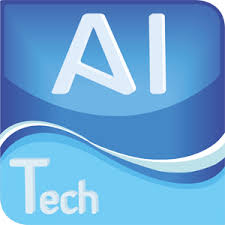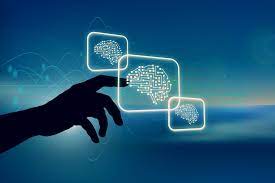Understanding AI and Machine Learning
Artificial Intelligence (AI) and Machine Learning (ML) are two of the most transformative technologies of our time. They are reshaping industries, driving innovation, and changing the way we interact with the world around us. This article explores what AI and ML are, how they differ, and their impact on various sectors.
What is Artificial Intelligence?
Artificial Intelligence refers to the simulation of human intelligence in machines that are designed to think and act like humans. These systems can perform tasks such as recognising speech, making decisions, and translating languages. AI is a broad field that encompasses various technologies, including machine learning.
What is Machine Learning?
Machine Learning is a subset of AI that involves the use of algorithms and statistical models to enable computers to improve their performance on a task through experience. Unlike traditional programming where rules are hard-coded, ML systems learn from data patterns without being explicitly programmed for specific outcomes.
Types of Machine Learning
- Supervised Learning: In this approach, algorithms are trained on labelled data. The system learns by example, making predictions or classifications based on input-output pairs.
- Unsupervised Learning: Here, algorithms work with unlabelled data and identify patterns or groupings without any prior guidance.
- Reinforcement Learning: This type involves training models through trial and error. Systems learn optimal actions based on rewards or penalties received from their interactions with the environment.
The Impact of AI and Machine Learning
The integration of AI and ML across various sectors has been revolutionary:
- Healthcare: AI-powered tools assist in diagnosing diseases more accurately and developing personalised treatment plans.
- Finance: Machine learning algorithms help detect fraudulent activities by analysing transaction patterns in real-time.
- Transportation: Autonomous vehicles rely heavily on AI to navigate roads safely without human intervention.
- E-commerce: Personalised recommendations driven by ML enhance user experience by suggesting products based on browsing history.
The Future of AI and Machine Learning
The potential applications for AI and machine learning continue to grow as these technologies evolve. With ongoing advancements in computational power and data availability, we can expect even more sophisticated systems capable of tackling complex problems across diverse domains.
The ethical considerations surrounding AI also play an important role in shaping its future development. Ensuring transparency, fairness, privacy protection, and accountability will be crucial as society increasingly relies on intelligent systems for decision-making processes.
Conclusion
The rise of artificial intelligence and machine learning marks a new era in technological advancement. By understanding these concepts better today—and addressing challenges responsibly—we pave the way towards harnessing their full potential tomorrow for positive societal impact worldwide.
Understanding AI and Machine Learning: Answers to 7 Common Questions
- What is machine learning in AI?
- What are the 4 types of AI?
- What is AI vs machine learning?
- What is the salary of AI ML engineer?
- Is ChatGPT AI or ML?
- How can I start learning AI?
- What are the 4 types of machine learning?
What is machine learning in AI?
Machine learning in AI refers to a method by which computers gain the ability to learn and improve from experience without being explicitly programmed. It involves the development of algorithms that can analyse and interpret data, identify patterns, and make decisions with minimal human intervention. By processing vast amounts of data, these algorithms enable systems to adapt their actions based on new information, leading to improved performance over time. Machine learning is a crucial component of artificial intelligence, as it provides the means for AI systems to autonomously evolve and optimise their functions in various applications, ranging from speech recognition and image analysis to predictive analytics and autonomous vehicles.
What are the 4 types of AI?
Artificial Intelligence (AI) can be categorised into four distinct types based on their capabilities and functionalities. The first type is Reactive Machines, which are designed to perform specific tasks without memory or past experiences influencing their operations; they respond to particular inputs with pre-programmed outputs. The second type is Limited Memory, which can utilise past experiences or data to make informed decisions, a capability often used in machine learning applications. The third type is Theory of Mind, an advanced form of AI that, while still largely theoretical, aims to understand human emotions and social interactions to better anticipate needs and responses. Finally, the fourth type is Self-aware AI, which represents the pinnacle of AI development where machines possess consciousness and self-awareness, allowing them to understand their own existence in the world; however, this remains a concept for the future rather than a current reality.
What is AI vs machine learning?
Artificial Intelligence (AI) and Machine Learning (ML) are often used interchangeably, but they refer to different concepts within the realm of computer science. AI is a broad field that encompasses the development of systems capable of performing tasks that typically require human intelligence, such as understanding natural language, recognising patterns, and making decisions. It aims to create machines that can mimic human cognitive functions. On the other hand, Machine Learning is a subset of AI focused on the development of algorithms and statistical models that enable computers to learn from and make predictions or decisions based on data. Unlike traditional programming, where explicit instructions are provided for every task, ML systems improve their performance over time by identifying patterns within large datasets. In essence, while all machine learning is AI, not all AI involves machine learning; ML is just one approach to achieving artificial intelligence.
What is the salary of AI ML engineer?
The salary of an AI and Machine Learning engineer can vary significantly based on several factors, including location, level of experience, and the specific industry in which they are employed. On average, AI and ML engineers tend to command high salaries due to the specialised skills and expertise required in this field. In the United Kingdom, entry-level positions may start at around £35,000 to £50,000 per year. However, with a few years of experience, professionals can expect to earn between £60,000 and £90,000 annually. Senior roles or positions within leading tech companies may offer salaries exceeding £100,000 per year. Additionally, those with advanced degrees or specialised knowledge in niche areas of AI may find even greater earning potential.
Is ChatGPT AI or ML?
ChatGPT is an example of both artificial intelligence (AI) and machine learning (ML). As an AI, it is designed to simulate human-like conversation by understanding and generating natural language. The foundation of ChatGPT’s capabilities lies in machine learning, specifically in a type of ML called deep learning. Through deep learning techniques, the model has been trained on vast amounts of text data to recognise patterns and generate coherent responses. Thus, while ChatGPT is categorised as an AI application due to its interactive nature, it primarily relies on machine learning methodologies to function effectively.
How can I start learning AI?
Embarking on the journey to learn AI and machine learning can be both exciting and rewarding. To start, it’s essential to build a strong foundation in mathematics, particularly in linear algebra, calculus, probability, and statistics, as these are crucial for understanding machine learning algorithms. Familiarity with programming languages such as Python or R is also beneficial, given their widespread use in AI development. Numerous online platforms offer comprehensive courses tailored for beginners, including Coursera, edX, and Udacity. These courses often provide hands-on projects that allow learners to apply theoretical knowledge practically. Additionally, engaging with communities like GitHub or Kaggle can provide valuable insights and opportunities to collaborate on real-world problems. Reading books and research papers on AI can further deepen one’s understanding of the field’s current trends and advancements. Consistent practice and a curious mindset will significantly aid in mastering AI concepts over time.
What are the 4 types of machine learning?
When exploring the realm of machine learning, a common query arises: “What are the 4 types of machine learning?” The four primary types include supervised learning, unsupervised learning, reinforcement learning, and semi-supervised learning. In supervised learning, algorithms are trained on labelled data to make predictions based on input-output pairs. Unsupervised learning involves identifying patterns in unlabelled data without predefined outcomes. Reinforcement learning focuses on training models through trial and error based on rewards or penalties received from interactions with the environment. Lastly, semi-supervised learning combines elements of both supervised and unsupervised approaches to leverage small labelled datasets alongside larger unlabelled datasets for enhanced model training and performance. Understanding these distinct types of machine learning is essential for grasping the diverse methodologies employed in artificial intelligence systems.




